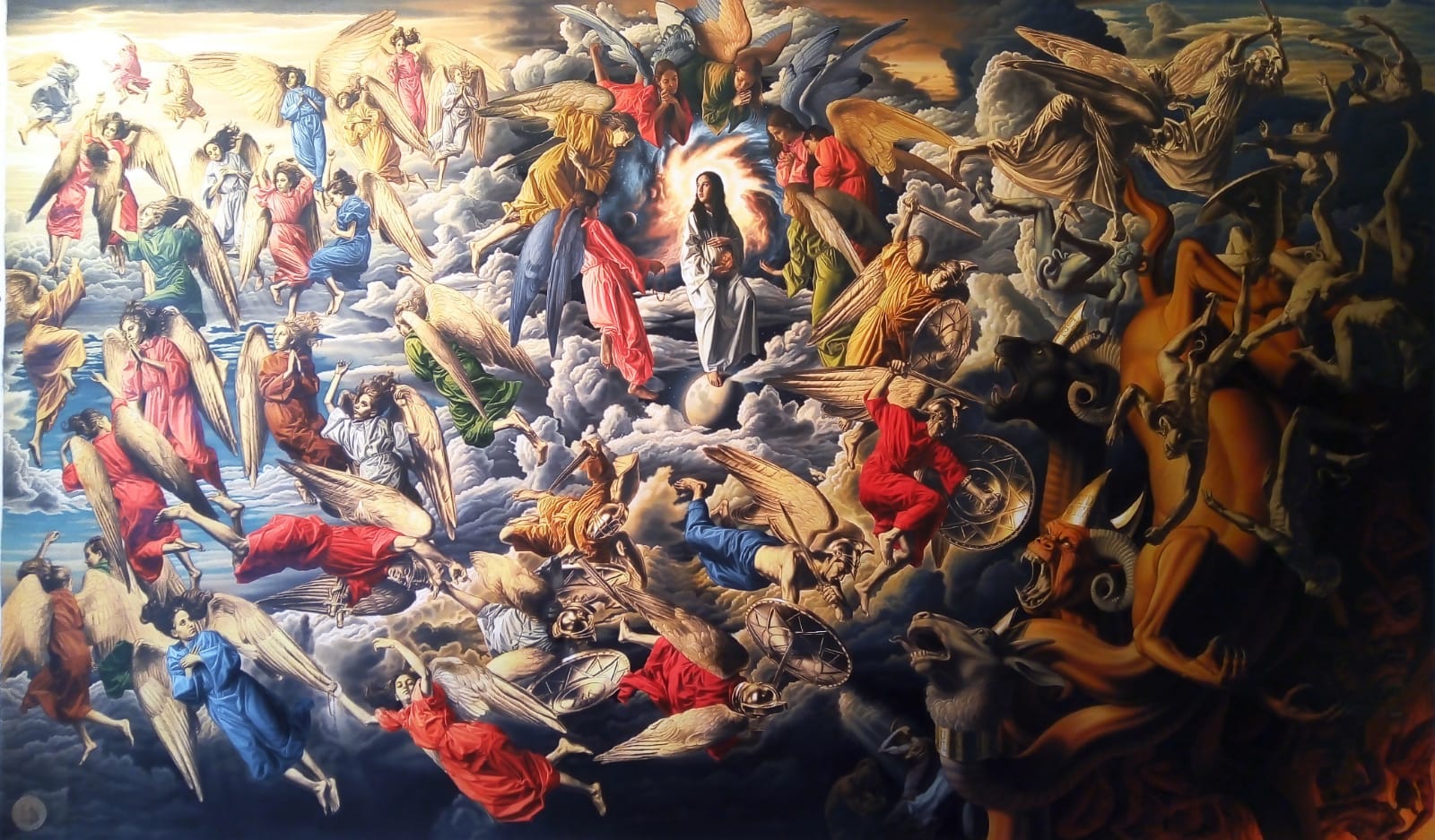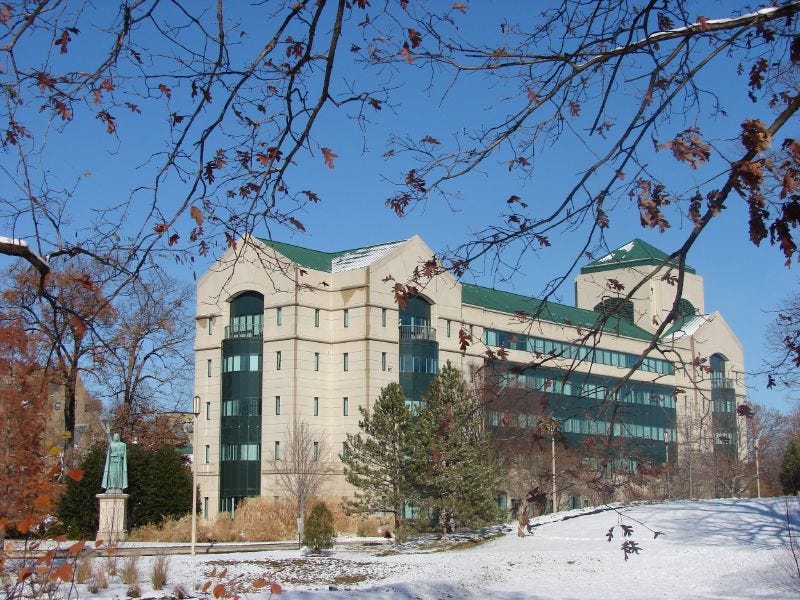Massimo Mellini is a master of art and glass work in Florence. His studio embraces a classical style, focusing on traditional mosaics and stained glass windows, mainly in churches. He’s recently been tasked with restoring 700-year-old artwork in the Duomo of Florence.
But Mellini has also done something not-so-traditional in his line of work. His studio has spent the last three years developing an image for a mosaic that - as of yet - has no customer, and no place to be installed.
The work, intended to be 20x40 feet, is based on Revelations 12, and entitled “Cosmic Battle Between Good and Evil.”
Putting this much time and effort into such a major piece without a planned location is a big risk. But Mellini says the work is motivated by faith - not money.
The Pillar spoke with Mellini about beauty, faith, and the intersection of theology and art. The conversation has been edited for length and clarity.
Art has been a big part of your family for decades, correct?
Yes, actually I'm the second generation. My father started in 1958 at our studio. At that time we were only working on projects in the United States. And then I carried on the studio when my father died.
We mainly do religious buildings - more than 90% of our work. Mosaics and stained glass windows. We even do restoration. One of the latest projects that we are doing now is restoring the stained glass windows for the Duomo here in Florence. They are 14th century stained glass windows…very good, very old. We are also installing an apse mosaic depicting the procession of apostles in the Newman Center in Fargo, North Dakota.
And you’ve recently done something unusual - you’ve commissioned a piece of art yourself.
Yes, yes. This is a project that I’ve been working on for a long time. Usually, the subject of the artwork always comes from the customer. They are always choosing what they want. But in this case, we flipped that process. We decided on a subject without a specific request.
It’s unique in this sense, because we’ve never done this before, and it is unusual that any studio does it this way. We have been working for more than three years just on the artistic composition of the piece. The first draft was done in black and white. And now, in the next four or five months, we are finalizing the colored one. The goal is for it to ultimately be a mosaic.
This is something that we really are involved in - in many ways. Artistically, yes, but also in the strong theological meaning behind the work. We have to strictly follow the theology.
The image depicts a battle of good vs. evil. Where did that idea come from? Why did you feel so strongly about it that you wanted to commission it yourself?
I am 60 years old. I have spent 40 years working on churches. When I reflect on my life and think about the things I’ve done, I think, "Okay, what do I really believe about my life that I can express?" For me, everything comes from this question.
You know, this [battle of good vs. evil] is something that we are always struggling with in our lives. And we really felt there was a need to depict this artistically. This was a way to express our faith. The question for us was, “How can we depict this sense of meaning that we have [in our lives], that we feel so strongly inside?” And starting from that, we came up with the idea to develop this original design.
Were there other artists or styles that you drew inspiration from?
We were looking for something really classic, recalling the Renaissance style that was in our tradition. We are in Florence, and we really feel this responsibility to carry on this style for the next generation.
Our studio has always worked in a classical style. We never follow contemporary or modern styles. I would say that the deeper meanings behind works of art do not always get conveyed with the modern style. We don’t want to have that kind of risk.
So basically this was always in our heart. And we were looking at something that really can express these important subjects and develop them in a very big sense, in a classical style. Instead of having a small subject, we want to really have something that impresses the person that is looking at the mosaic.
At the center of the image is Christ in the womb of Mary. Why did you make that artistic choice - rather than Christ crucified, or Christ resurrected?
Because that's the starting point... life starts from there. If we don't consider the importance of this, we are going to compromise the rest… it's kind of a journey. That's the starting point. There are other important points to develop along the way.
And then there are angels and demons battling with each other. What do you want people to take away from this scene?
If you see the faces [of the angels and demons], they're similar. What's the meaning behind this? It’s that the person looking at the image has to make a choice every day - which kind of person does he want to be? Because he has the ability to go either way. So there is a universal meaning - the person that is looking at it must ask himself, "What I want to do in my life today, just today?"
Second, if you look closely, you can see that the angels are fighting in two different ways - with swords and with rosaries. And that is a reminder that praying every day is a way to fight in this spiritual battle.
Since you are kind of flipping the process, as you mentioned, by developing the work before having a customer in mind, will you have to connect with someone to help find a location for the final product?
Yes. I really hope that the final mosaic will be placed in a beautiful location where many people will have the chance to see it. If people that are looking at the artwork can appreciate the beauty of it and the deeper meaning of the theology behind it, this will be, for us, the greatest satisfaction. We are not doing this for any economic satisfaction. We certainly would not spend three or four years just developing the artwork if that was our motivation.
With your focus on remaining a traditional classical studio, you must have faced challenges at different points in the last few decades, when the trends in churches were more modern. Are you seeing a resurgence of interest in a more classical style of art?
We really don't think about that. We just feel that we are doing the right thing. We hope that many others will have the same vision that we have, but we are not seeking approval.
Beauty is traditionally considered one of the three transcendentals - along with truth and goodness. Do you think that in the modern world, beauty is still capable of touching people’s hearts and moving them in a way that words cannot?
Yes, I think so. Because if we can show people that we are still able to produce something really beautiful, this pushes them to think deeply about the artwork and the meaning behind it. And that’s the ultimate goal for us. The beauty points to the greater meaning behind it.
Again, we work just in the classical style. I think it’s easier to stay on the right path that way. Instead of doing something contemporary or symbolic, which may be able to convey some idea, but usually does not portray the sense of holiness of a church or a house of God. We don’t want to risk losing that.





